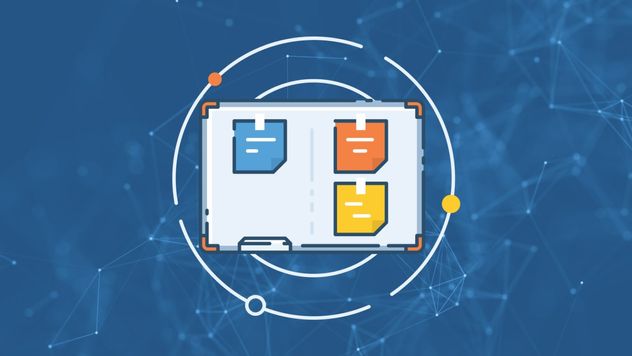
Digital transformation is one of many buzzwords to inundate the marketing world in recent years, and for good reason. The way the world works has changed, and brands who don’t leverage the latest technologies to elevate customer experiences and improve business processes will be left behind.
For most organizations undergoing a transformation, their website takes top priority. It’s a critical customer touchpoint and often the preferred way for customers to engage and purchase products and services. Ensuring they’re able to do so seamlessly is essential, or they will go elsewhere – according to PWC, 32% of customers would stop doing business with a brand they loved after one bad experience. Unfortunately, as organizations focus on incorporating the latest technology and trends to amplify their online experience, they often forget one very important thing: accessibility.
If you’re transforming your digital properties to improve customer experiences, but are forgetting to factor in accessibility, it’s all for naught, and in the very near future, you’ll likely need to transform again. Why? Without accessibility, you’re severing your brand from millions of users who live with a disability:
- 1.3 billion people with disabilities globally
- Friends and family represent an additional 2.3 billion consumers with an emotional connection to disability
- People with disabilities represent a spending power of more than $6 trillion
Though not all disabilities directly impact a person’s ability to go online, many do, and as the population ages, more and more people will be affected. With so much of the world reliant on digital services to operate – from banking, to job applications, to ecommerce and everything in between – it’s imperative that organizations prioritize digital accessibility so everyone has the same access and opportunities.
According to W3C, people with disabilities represent a spending power of more than $6 trillion.
The (Surprising!) Advantages of Accessibility

Accessibility can feel like another item in a very long list of things to consider when undergoing a digital transformation, but you can’t ignore it. In fact, it should be a priority. Without accessibility, you’re failing to serve a huge portion of the population, and that’s not just morally wrong, it puts your company in serious legal risk (more on that later). Aside from ensuring equal access, accessible digital properties offer a number of other advantages that can help you deliver on critical KPIs:
- Increase Customer Engagement. When customers aren’t frustrated by a digital experience, it’s easier for them to do business with you. When they do encounter barriers, they’re more likely to walk away. A study by Click-Away Pound found that 71% of users with disabilities will leave a site immediately if it’s inaccessible. Don’t give your customers a reason to take their business elsewhere.
- Improve Design and Functionality. There’s a misconception that an accessible website equals a basic or boring website – that couldn’t be further from the truth. Not only does accessibility encourage cleaner code and improve SEO (Google rewards sites that are inclusive), it puts the user first, which improves usability and leads to better experiences for everyone. Think of digital accessibility the same way you think of accessibility measures in physical spaces: everyone takes advantage of curb cuts, automatic doors, etc., – the same will be true of accessibility measures on your online properties.
- Boost your Brand. Inclusive experiences are better for business – delivering positive, barrier-free interactions to all customers creates loyal customers, and loyal customers share positive experiences with friends and family. It’s also worth noting, a study of Fortune 100 companies found that disability inclusion is common practice among high performing businesses. There’s simply no reason not to embrace accessibility.
- Limit Legal Risk. In recent years, the volume of ADA Title III lawsuits and demand letters has increased exponentially, with more than 11,000 suits filed in the US in 2019 alone. In Canada, public and private sector organizations will be required to have an accessible website by January 1, 2021 or face severe financial penalties. Having an accessible website means you’re adhering to WCAG standards – the global benchmark for measuring accessibility – which ensures you’re compliant with ADA, AODA, Section 508 and other global requirements, effectively protecting you from risk.
Achieving Accessibility
Now that you know why an accessible website is important, let’s talk about how you get there. The process is complex, ongoing, and requires regular audits and updates to ensure you’re getting where you need to be – and staying there. Because of this, partnering with an accessibility vendor is ideal. They’ll uncomplicate the process, keep you on track, and help ensure work is completed correctly.
The right kind of partnership will begin with both automated and manual audits of your digital properties, which can include everything from websites and wireframes to PDFs and mobile apps. Some common accessibility issues discovered through auditing include:
- Display: poor color contrast or text size makes content inaccessible to users with vision impairments.
- Buttons: Critical buttons (e.g. Buy Now, Cancel, Submit) are mislabeled or missing labels, so customers using screen readers are unable to properly engage with content.
- Navigation: Users are unable to browse your site using keyboard-only navigation.
- Images: Relevant images are missing alt-text which accurately describes the content of the image to screen reader users.
Automated testing provides a bird’s eye view of your accessibility issues, but manual testing is required to dive deeper. Manual tests are performed by experts using the same tools and techniques a user with a disability would employ to engage with your digital properties. This aspect is crucial to determine the full scope of your accessibility issues. Manual testers also weed out false positives (accessibility issues identified by automated tools that don’t actually exist) and perform other critical tasks that require human judgment. For example, when scanning an image for alt text, an automated testing tool would tell you alt text exists and give you a passing grade, but it can’t tell you if it accurately describes the image content. If alt text reads ‘black mouse,” is it describing a rodent or computer accessory?

Is your image alt text descriptive enough for users to understand what’s depicted?
This is why it’s essential to include manual testing by accessibility experts. Users shouldn’t have to guess.
Once all accessibility bugs are identified, they’ll work with you to create a remediation roadmap to fix issues according to global guidelines, starting with the most critical problems. They’ll also serve as your System of Record, documenting your ongoing accessibility efforts which can be critical to defend against the threat of legal action or accusations of intentional noncompliance.
It’s important to remember that, much like your digital transformation, achieving accessibility and compliance is an ongoing process. Auditing and remediation will be required regularly as your digital properties evolve over time. The good news: no matter where you are in your transformation journey, it’s never too late to get serious about accessibility.



